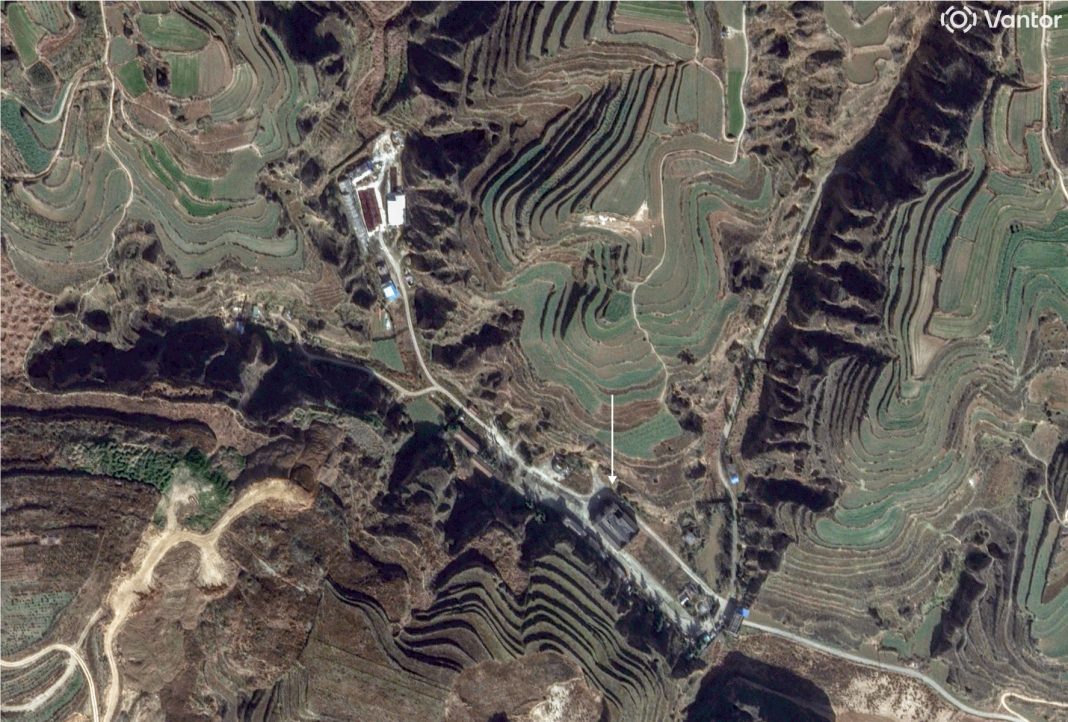Satellite images and newly uncovered government records have revealed a vast and fast-growing network of missile production sites across China. Analysts say this rapid buildup, which began around 2020, is one of the largest expansions of military manufacturing seen in recent history.
Rapid Missile Production Points to a New Global Arms Race
More than half of China’s missile production facilities — including factories, research centers, and testing grounds — have expanded dramatically in the past five years. The newly built structures add up to more than 21 million square feet of extra floor space, signaling a significant increase in the country’s ability to produce advanced weapons.
These developments, captured in satellite photos analyzed alongside government documents and maps, show new towers, underground bunkers, and long storage buildings that experts link to missile and rocket assembly. In several locations, missile parts and launch equipment are even visible on the ground.
The scale of construction suggests China is working to enhance its deterrence capabilities and strengthen its position as a military superpower. The buildup also highlights a growing imbalance with the United States, which continues to face supply chain challenges and ammunition shortages amid ongoing conflicts around the world.
Expanding Missile Production Sites Replace Villages and Farmland
The expansion is not limited to a few isolated locations. More than 60% of 136 known or suspected missile production facilities show clear signs of growth, with new construction replacing rural farmland and small villages. Some of these areas have grown by tens of thousands of square feet in just a few years.
The sites belong to two of China’s largest state-owned defense corporations, which oversee missile production and rocket development for nearly all branches of the People’s Liberation Army (PLA). The PLA Rocket Force, the elite branch responsible for managing the nation’s missile arsenal, appears to be a major focus of this surge.
Satellite data also shows that nearly two-thirds of China’s Rocket Force bases have expanded since 2020. Experts believe this increase could sharply boost China’s missile production capacity, especially for long-range and hypersonic weapons.
Tariffs Alarm Bells Ring as China’s Exports Suddenly Collapse — Weakest Performance in Eight Months
Several new facilities are located near existing aerospace or defense hubs, with some hidden deep in mountain valleys or camouflaged within industrial zones. These sites include fortified bunkers, thick concrete berms, and high blast walls — safety measures typical of explosive manufacturing.
In one region, a large facility believed to produce the DF-26 medium-range ballistic missile has expanded by almost 50% since 2020. A variant of this weapon, the DF-26D, is capable of carrying a hypersonic glide vehicle, which makes it difficult for missile interceptors to stop. Analysts often refer to the DF-26 as the “Guam killer,” since it could theoretically target U.S. bases in the Pacific.
Global Tensions and Military Imbalance
China’s missile production is rapidly expanding alongside rising defense spending. In early 2025, Beijing raised its military budget by 7.2% to about $245 billion, marking the fourth straight year of growth and underscoring its focus on missile and rocket programs.
At the same time, the United States faces strain on defense supplies after deploying large numbers of missile interceptors to support allies in Ukraine and Israel, prompting concerns about readiness for potential Indo-Pacific crises.
Satellite data shows China’s missile production network has nearly doubled construction since 2022, following Russia’s invasion of Ukraine. Analysts say Beijing is applying lessons from that war — particularly how mass missile strikes and cheap drones can overwhelm advanced defenses — to accelerate its own missile production and testing capacity.
China’s “F-35 rival” faces five fatal flaws — no combat data, weak engine, and untested tech
Experts believe missiles built at these expanding sites could play a key role in any potential conflict over Taiwan. China’s strategy focuses on creating an “anti-access denial” zone, using large missile barrages to disable ports, airfields, and supply bases, preventing U.S. forces from intervening effectively.
However, China’s military buildup faces internal hurdles. A sweeping anticorruption campaign has led to the removal of several top military officers linked to missile production projects, casting doubt on the efficiency and reliability of the broader defense system.
Despite those setbacks, the scope of construction remains massive. Satellite images show dozens of new facilities across China, marking an industrial-scale surge in missile production that experts say is driving a new global arms race.

